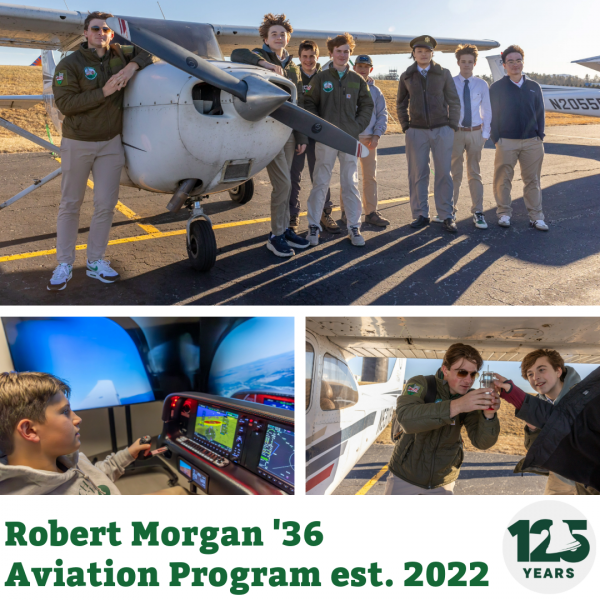
Daily arrivals and departures from Asheville Regional Airport (AVL) tell a story, as does the physical state of the airport itself.
A $400 million expansion currently underway will be able to accommodate an estimated 4 million annual travelers in the not-so-distant future. AVL is the third-busiest airport in the state and less than 5 miles from Christ School’s campus.
Beyond convenience, it’s understandable why everyone involved is so excited about the new home for our Robert Morgan ’36 Aviation Program in its third year.
Greenies are training out of Western North Carolina Aviation – an FAA Certified Flight School – which is owned by a Christ School family, Charles and Amy Thomas P’21. The change of venue and generosity of donors has ensured that students now have access to WNC Aviation’s facilities, fleet of planes, and staff, as well as a second simulator (another one, which was newly-installed last month, is kept on campus in instructor Les Thornbury’s classroom).
Christ School is one of only three high schools in the country to have an aviation program.
Boys in the program this year are Aaron Bragg '29, Colin Brouse '28, Tyler Brouse '25, Andrew Carson '28, JT Duchac '28, David Gaines '26, Eric Li '26, Richard Magruder '28, Nick Michaelides '28, Danny Ton '25, and Bo Taylor '28.
Mr. Thornbury is a former Navy fighter pilot and VMI graduate. He has been at Christ School since 2016 and was an instructor during the aviation program’s inaugural year (2022-23).
